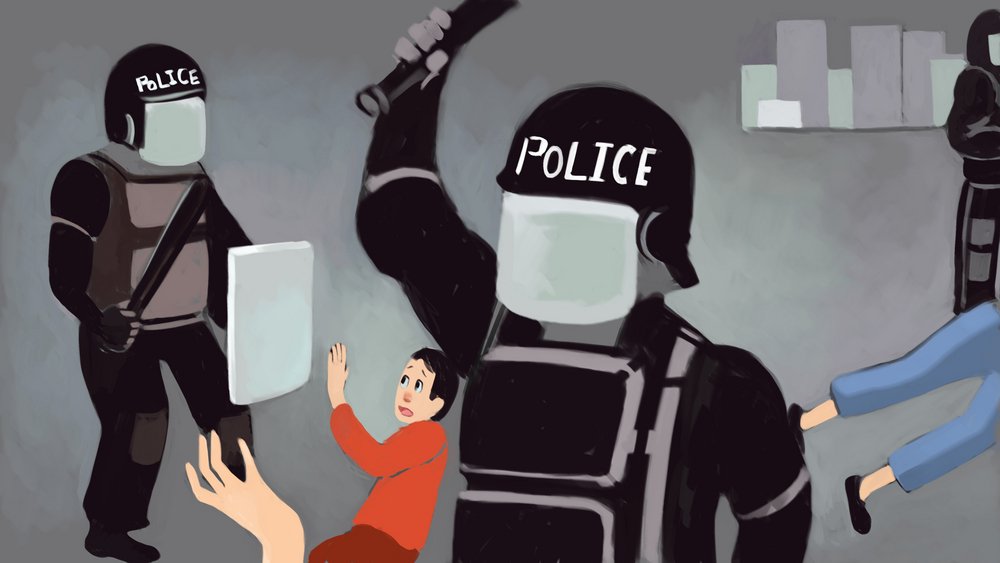Penal Code § 149 PC makes it a misdemeanor offense when a “public officer…under color of authority, without lawful necessity, assaults or beats any person.” A conviction carries up to one year in jail and fines of up to $10,000.00.
In other words, public officers such as police have no license to physically touch or hurt anyone unless they have “lawful necessity.” Examples of situations that may give public officers “lawful necessity” to batter or assault someone include the following:
- a person starts assaulting the public officer, and the officer acts in self-defense.
- a person starts assaulting someone else, and the officer acts in defense of the “victim.”
- a person is rioting during a protest, and the officer stops him/her before he/she can cause further damage or injuries.
Defenses
Officers accused of a crime under this criminal law can challenge the accusation with a legal defense. Three common defenses include defendants showing that they:
- were falsely accused,
- acted in self-defense, and/or
- acted out of necessity.
Penalties
A violation of California Penal Code Section 149 is a misdemeanor (as opposed to an infraction or a felony). The offense is punishable by:
- custody in county jail for up to one year, and/or
- a maximum fine of $10,000.
Our California criminal defense attorneys will highlight the following in this article:

California Penal Code 149 PC prohibits public officers, such as police, to beat people without reason.
1. Unlawful Beating
A prosecutor must prove the following to convict a person under this California law successfully:
- the defendant assaulted or beat another person,
- when the defendant did this, he/she was acting as a public officer, and
- the defendant committed the assaulting or beating without lawful necessity.1
Examples of a “public officer” include a:
- law enforcement personnel,
- police officer,
- peace officer, and
- member of the California Highway Patrol.
“Lawful necessity” means that a public officer had a legally valid reason for assaulting someone else. Examples include striking someone in self-defense or in furtherance of preventing a dangerous situation.
Note that violations of this law are often viewed as offenses against public justice.
2. Common Defenses
Criminal defense lawyers draw upon several legal strategies to help defend clients against charges under this statute. Three common ones include showing that a defendant:
- was falsely accused by another person.
- acted in self-defense.
- acted out of some other lawful necessity.
Falsely accused
Unfortunately, public officers get falsely accused of this crime all too often. Sometimes people accuse a police officer due to revenge or because of a misunderstanding of the way an event took place. Therefore, defendants can always raise the defense that they were unjustly blamed.
Self-defense
Public officers can always raise the defense that they assaulted someone out of the defense of themselves, someone else, or a person’s property. Self-defense is a valid legal defense if public officers can show that:
- they had a good faith belief that they, or someone else, was in imminent danger of physical harm or serious bodily injury, and
- force was necessary to stop the danger.
Necessity
The language of PC 149 states that officers are only guilty under this statute if they assault someone “without lawful necessity.” This means that defendants can try to use the facts of their cases to show that the use of force was necessary under the circumstances. Perhaps, for example, police officers had to strike someone because that person was:
- obstructing justice,
- committing some criminal act,
- causing damage as a member of an unlawful assembly, or
- posing a danger to public health or other people in a public place.

A violation of this statute can result in a fine and/or jail time.
3. Punishment
A violation of this statute is a misdemeanor offense under California law.
The crime is punishable by:
- a term of imprisonment in county jail for up to one year, and/or
- a maximum fine of $10,000.2
Note that a judge can award a defendant with misdemeanor (or summary) probation in lieu of jail time.
4. Related Offenses
There are three crimes related to unlawful beating or assault by a public officer. These are:
- resisting arrest – PC 148,
- assault – PC 240, and
- battery – PC 242.
Resisting arrest – PC 148
Per Penal Code 148 PC, resisting arrest is the crime where people willfully resist, delay, or obstruct law enforcement officers or emergency medical technicians in the performance of their official duties.
Depending on the facts of the case, resisting arrest could form the basis for an officer to lawfully use force against another person.
Assault – PC 240
Per Penal Code 240, assault is the crime where people attempt to commit a violent injury on someone else.
As with charges under PC 149, defendants accused of a crime under this statute can challenge the accusation with the defense that they acted in self-defense.
Battery – PC 242
Under Penal Code 242 PC, battery is the crime where people willfully and unlawfully use force or violence on someone else.
As with a violation of PC 149, a violation of this law is a misdemeanor offense. The crime is punishable by up to six months in county jail.
Legal References:
- California Penal Code 149 PC. See also People v. Perry (2019) 36 Cal.App.5th 444; and People v. Rosen (2007) 148 Cal.App.4th 1311.
- California Penal Code 149 PC.
